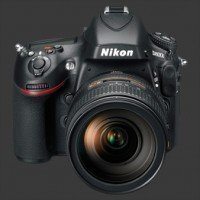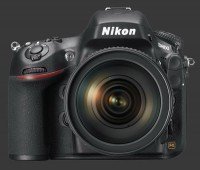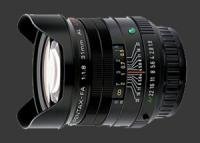Moire Hunt with the Pentax K-5 IIs and K-5 II
Pentax K-5 IIs vs Pentax K-5 II
The Pentax K-5 IIs
Pentax K-5 IIs and Pentax K-5 II
Pentax K-5 II were introduced simultaneously as the first pair of cropped-sensor DSLRs with an without an anti-alias filter. The same year, Nikon introduced the first such pair of full-frame DSLRs, the D800E
Nikon D800E and D800
Nikon D800. This gives photographers the opportunity to choose if they want an anti-alias filter or not. The versions without anti-alias version should cost the same to manufacture yet both Pentax and Nikon decided to price the version without higher by $100 and $300 USD more respectively.
Anti-Alias Filters versus Moire
Digital cameras normally use anti-alias filters to avoid an artifact called moire. While there are scientific articles showing exactly what causes it, all photographers need to know is that it is happens when the grid structure of a digital sensor interacts with a regular pattern being photographed.

The result is something like the above where photographing a black grid on white background produces these false-colors. Note that saturation was increased here for emphasis. These colors appear because of the Bayer pattern which is placed above the CMOS sensor. Sigma cameras which use Foveon sensors do not show false-colors but can still show achromatic moire. Fuji's X-Trans sensors avoid moire by using an irregular color-filter instead.
What an anti-alias filter does is blur incoming rays of light so that the sensor does not receive a pattern which is too fine for it to resolve. It does this uniformly and regardless of subject matter, resulting in a consistent loss of sharpness. In other words, digital camera makers decided at some point that it is acceptable to reduce critical sharpness in order to limit the occurrence of moire. Some obviously changed their minds recently!
One key advancement in technology for this change of heart is that there are now software tools to deal with moire. The popular Lightroom 4.2 now includes a moire-removal brush. Eventually, this may even more into cameras just like many of them automatically correct for chromatic aberrations.
Moire Hunt
Moire occurs when particular circumstances occur. It is very easy to simulate via computer generated images, but it is rather difficult to consistently cause moire in images taken by a digital camera, even one without an anti-alias filter. Cameras with an anti-alias filter are not immune either but or less likely to see moire in their images. Ironically, when seeing images at less than 100%, moire is easy to see even if it is not present! This can occur when reviewing images on the back of the camera which is rarely done at 100%.

In order to compare the Pentax K-5 IIs and the K-5 II, we had to find subjects which would consistently produce moire. This proved to be challenging as we tried various fabrics, objects and targets. Targets were tricky since printing one often causes moire on the print! After all, printers use regular patterns to produce their output. So, printing one regular pattern with another causes moire too.
Success in causing moire finally done with targets downloaded from the Moire Demonstration Kit.
Distance versus Moire
Even with a target intended to produce moire, it does not always occur. One major factor in the setup is subject distance. Technically, it is the angle-of-view and resolution of the camera compared to that of the target. With a prime lens and fixed-sized target, the controlling factor is distance.
When the target is too close, the camera can resolve the details and therefore correctly render the pattern. For such cases, once may see moire when viewing the resulting image at less than 100%. When zooming to 100% though, the artifact disappears.
When the target is too far, the pattern is too fine to resolve and gets rendered as a uniform surface. In this case, no moire is visible regardless of magnification.
Aperture versus Moire
Lenses vary in sharpness with aperture. Stopping down from wide-open, lens usually get sharper. A good lens may even be sharpest wide-open or need less than one stop to reach its maximum sharpness. Typically, a lens is sharpest two stops down from its maximum aperture.
Stopped further down, a lens stays sharp until it hits the diffraction limit which depends on the physical aperture and the size of pixels. Passed the diffraction limit, images become gradually softer. Note that come cheap or kit lenses are sharpest beyond the diffraction limit of modern DSLRs, so they will always produce soft output.
Changes in sharpness according to aperture interacts with the occurrence of moire. Beyond the diffraction limit, a small aperture acts an anti-alias filter. It can have the same effect at wide apertures where the lens is not at its sharpest.
Pentax K-5 IIs versus Pentax K-5 II
Now with a target at the right distance for these cameras and angle-of-view of the Pentax FA 31mm F1.8 Limited
Pentax FA 31mm F1.8 Limited lens used for this test, we can compare the Pentax K-5 IIs to the K-5 II at different apertures. The pattern used to cause moire here is a set of tight slightly angled lines.
| Pentax K-5 IIs | Pentax K-5 II |
|---|---|
|
|
|
Click on the aperture above to see what happens to the crops. At F/2 where the 31mm Limited is sharp but not at its sharpness, the Pentax K-5 II's anti-alias filter is strong enough to limit moire and the pattern seems made of horizontal lines while the K-5 IIs shows a clear diagonal artifact. As the lens sharpens while being stopped down, the K-5 II starts showing a phantom diagonal pattern too!
The lens starts losing sharpness at F/5.6 where we see the diagonal pattern weakening. By F/6.7 is is minimal on the K-5 II but still strong on the K-5 IIs. At F/9.5, the anti-alias filter of the K-5 II prevents moire while the K-5 IIs still shows a clear diagonal pattern. Stopping down further, one can see the diagonal pattern gone from the K-5 IIs when it passes the diffraction limit at F/13.
Now, note the text fragment at the bottom of the crop. It is sharper on the K-5 IIs at all apertures. This shows that there is a constant loss of sharpness due to the anti-alias filter but that it does not always prevent moire, merely reduce it.
The bottom line is that the Pentax K-5 IIs delivers a clear advantage in resolution at the expense of occasional moire. Unless you regularly work with fine-patterns such as textiles, it the Pentax K-5 IIs is really worth its price. Otherwise, dealing with the moire, which has to be done image-by-image, is certainly going to be a hassle and perhaps the loss of resolution is an acceptable cost.
Please Support Neocamera
All information on Neocamera is provided free of charge yet running this website is a huge endeavor. Purchases made via affiliate links found throughout the site help keep it running and up-to-date. There is no additional cost to you, so please consider buying via these links to our affilates:
Thank you for your support!
Updates
2025.11.13

Best Gifts for Photographers in 2025 by Budget
The annual Neocamera Photography Gift Guide updated to 2025. Find great gifts for photographers with any price budget.
2025.07.07

Stellar Photo Recovery Review
Review of Stellar Photo Recovery V12. This Windows and MacOS software can recover photos and videos in a huge number of formats from memory cards, USB drives, SSDs and HHDs.
2025.05.14

Huion Kamvas 13 Gen 3 Review
In-Depth review of the Huion Kamvas 13 Gen 3 Pen Display Tablet for photographers and graphic artists.
2025.01.18

Fujifilm GFX 2025 Lens Roundup
Lens Review roundup of Fujifilm GFX Medium-Format lenses. Quality, performance and handling of the GF20-35mm F/4R WR, GF30mm F/3.5 Tilt-Shift and the GF55mm F/1.7.
2024.11.18

Best 2024 Photography Gifts for Every Budget
Great gifts for photographers and photo enthusiasts selected for every budget among the best products of 2024.
2024.08.07

Eye Protection Tips for Professional Photographers
The four main considerations for professional photographers regarding eyewear.
2024.07.14

Fujifilm X100VI Review
Flagship fixed-lens compact digital camera with a 40 MP sensor and Image-Stabilization, a first for the series. Retro design featuring dual control-dials, plus direct ISO, Shutter-Speed and EC dials. Its hybrid viewfinder can switch between EVF and OVF mode.
2024.05.09

Fujifilm GFX100 II Review
Flagship 102 Megapixels Medium-Format Mirrorless Digital Camera with 8-Stop 5-Axis IBIS, 8 FPS Drive, 8K Video and 400 MP Super-Resolution capture in a weatherproof and freezeproof body with dual control-dials and dual memory-card slots.
2024.04.03

Fujifilm X-T5 Review
Newest Fujifilm flagship boasting a 40 MP APS-C sensor, 5-axis IBIS with 7-stop efficiency, 15 FPS continuous drive, 6.2K Video capture, dual control-dials and dual SDXC UHS-II slots in a sturdy weatherproof and freezeproof body.
2023.11.20

Best Digital Cameras of 2023
Find out which are the Best Digital Cameras of 2023. All the new Mirrorless Digital Cameras from entry-level to high-end professional.
2023.07.10

Fujifilm X-H2 Review
40 Megapixels APS-C Hybrid Mirrorless Digital Camera with 7-stop IBIS. Fastest shutter ever and 8K video capture. Large builtin EVF with 0.8X magnification and 5.8 MP, plus an Eye-Start Sensor. Packed with features and large number of controls in a weatherproof and freezeproof body.
2023.05.07

Sony FE 20-70mm F/4G Review
Review of the unique Sony FE 20-70mm F/4G lens. The optical zoom of this lens spans ultra-wide-angle and medium focal-length coverage, making it one of the most versatile Full-Frame lenses on the market.
2025.11.13
2025.07.07
2025.05.14
2025.01.18
2024.11.18
2024.08.07
2024.07.14
2024.05.09
2024.04.03
2023.11.20
2023.07.10
2023.05.07
NEWS
2025.12.02

Sony Upgrades Alpha 7 to 5th Generation
Digital Camera ○ Lens
2025.11.29

Venus Optics Releases New Zero-D Tilt-Shift Macro Lens
Lens
2025.11.23

Best Digital Cameras of 2025
Digital Camera
2025.11.14

Photography Gift Guide 2025 Edition
2025.11.06

Canon Announces Third-Generation R6 Mirrorless
Digital Camera ○ Lens
2025.10.23

Fujifilm Launches X-T30 III Plus New Wide Zoom
Digital Camera ○ Lens
2025.10.21

Peak Design Unveils Field Plate and Form Straps
2025.10.16

Nikon Unveils Z-Mount DX Lens Duo
Lens
2025.10.16

Venus Optics Unveils Fast Telephoto Prime Lens
Lens
2025.10.01

Think Tank Photo FocusPoint RollTop Backpacks
Bag
2025.09.30

Sony Produces Super Macro GMaster Lens
Lens
2025.09.17

Venus Optics Created First Telephoto Ultra-Macro Lens
Lens






